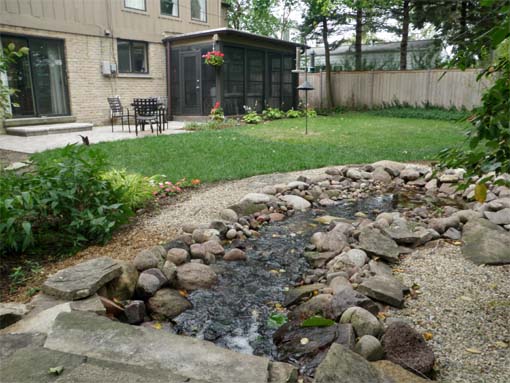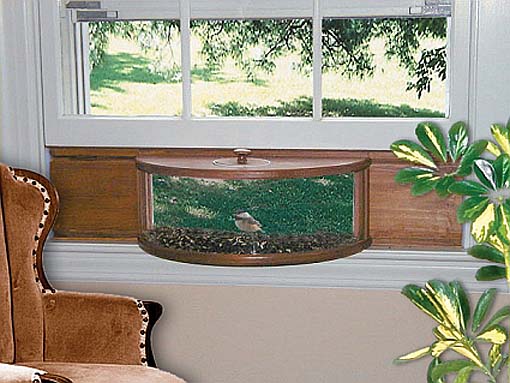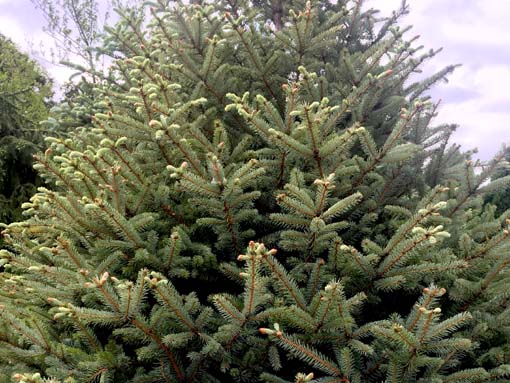A bird-friendly garden can be beautiful as well as functional. These visitors add another living dimension to the garden. It is possible to attract a variety of species to the garden throughout the year in the Chicago region. Birds have four major habitat needs: water, food, cover, and a place to raise their young.
Water
Birds require water all twelve months of the year. The moving water of a pond or pondless waterfall is ideal, but a bird bath will also work. Ponds can easily be kept unfrozen in winter with floating heaters. Smaller models are also available for bird baths.

We installed a pondless waterfall for our clients, who are avid birders. They report over 20 bird species have visited their garden since.
Food
Setting out bird feeders with sunflower seed is one way to attract birds; however, plants can provide food for birds by way of seeds or nuts, hosting or attracting feeder insects, and providing nectar for hummingbirds. Seed- and nut-producing plants include native plants such as Oak, Hazelnut, Sumac, Viburnum and Serviceberry. Non-native plants also work well such as Beautyberry, Crabapple and Kousa Dogwood.
While seeds and nuts are important, over 95% of terrestrial birds feed their young exclusively protein-rich insects. These feeder insects use a variety of North American native plants as host plants in the larval stage. For example, native Oak and Viburnum host hundreds of species of butterflies and moths. Very few non-native plants host feeder insects.
Hummingbirds feed on flower nectar and insects. They can consume up to 50% of their weight in sugary nectar per day. Good nectar-producing plants include Hyssop, Beebalm, Cardinal Flower, and Beardtongue.

Children can gain an appreciation for wildlife with window bird feeders. This ingenius feeder from Coveside has a one-way mirror so you see them upclose, but they don’t see you. Photo credit: songbirdgarden.com.
Cover
The best way to provide cover for birds is by planting a variety of canopy trees, understory trees, shrubs, and herbaceous perennials. In particular, evergreen trees provide shelter for small birds from weather and birds of prey. Many species also provide essential winter seeds such as Juniper, Spruce, and Arborvitae.

Thick, evergreen branches of Fat Albert Spruce not only add beauty to a garden but also provide plenty of cover for small birds.
Place to Raise Young
Many birds nest from March through July in our region. A variety of dense plant layers can encourage natural nesting locations for many birds. Nest boxes can help birds that nest exclusively in tree cavities. Different species have different requirements to find a nest box suitable.
Attracting birds to the garden is all about keeping them watered, fed and sheltered during all seasons. Spring and fall are great times to add some bird-friendly plantings because many of them are trees and shrubs. If you enjoy putting out a bird feeder, consider having your trees, shrubs and perennials work for you to create a year-round natural bird habitat.

